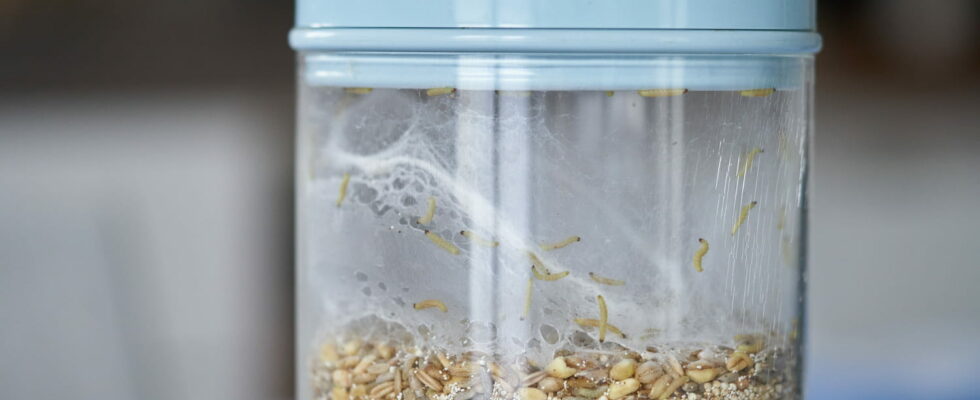Have you discovered small flying or crawling insects among your food? These are food moths, a scourge that invades kitchens. Don’t wait to take action by eliminating them from your cupboards!
Food moths are a real scourge that affects many homes today. These small flying or crawling insects quickly invade cupboards, infesting many foods. And while they are not dangerous, their presence is as unpleasant as it is disgusting.
Food moths, such as the Indian fruit moth and the flour moth, can arrive at your home in various ways, including through your groceries through an open window. These insects are attracted to several types of foods on which they feed, particularly those rich in starch: cereals (flour, rice, wheat, oats, etc.), nuts, dried fruits, spices, chocolate, etc. They go through four life stages that are important to know in order to better combat them: egg, larva, chrysalis and adult. The larvae, which cause the most damage, can pierce packaging (plastic or cardboard) to access the food.
The first step to getting rid of food moths is to ensure good hygiene in your kitchen. Clean your cupboards and all food storage areas regularly with white vinegar. This natural and economical product is an excellent disinfectant and repellent. Pay close attention to the nooks and crannies where moths like to hide. You can also use bleach diluted in water.
Steam is also very effective. If you have a steam cleaner, use it to disinfect your cabinets. The high temperature kills larvae and eggs, ensuring a deep clean. It is the most formidable weapon for the elimination phase.
Natural remedies can help keep moths away. Lavender sachets or a few bay leaves placed in your cupboards act as effective repellents. Essential oils of bay, cinnamon, lavender, peppermint or geranium can also be used. Place a few drops on a clean cloth and place it in your cupboards. Salt is a natural repellent for food moths. Place it around your packages of pasta, cereal and other products to keep them at bay.
In case of severe infestation, pheromone traps can be useful. Sold in the form of stickers, they contain substances that attract male moths and then retain them by adhesion, thus disrupting the reproduction cycle of the “colony”. Place these traps in your cupboards to control the moth population. Be careful, however, because these traps are not enough to eliminate the entire population. If you notice an infestation, it is essential to throw away contaminated food. Do not try to save it, because eggs invisible to the naked eye may persist. Empty and clean your cupboards carefully to eliminate all traces of moths.
A few simple recommendations can help you avoid colonization and the resulting extermination. First, be vigilant when shopping. Inspect packaging for any traces of contamination. Moths can sneak into your groceries right from the store. Taking a few moments to check packages of flour, cereal, or other dry goods can prevent an infestation.
Next, to prevent moths from setting up shop, transfer your food to airtight containers as soon as you get home. Loosely sealed bags are an invitation for these pests. Use glass jars or tightly sealed boxes to store grains, flours, and other dry goods.
Finally, be very careful if you buy in bulk. Use specific bags for different types of food and clean them thoroughly between each use. This precaution prevents cross-contamination and limits the risk of infestation.
